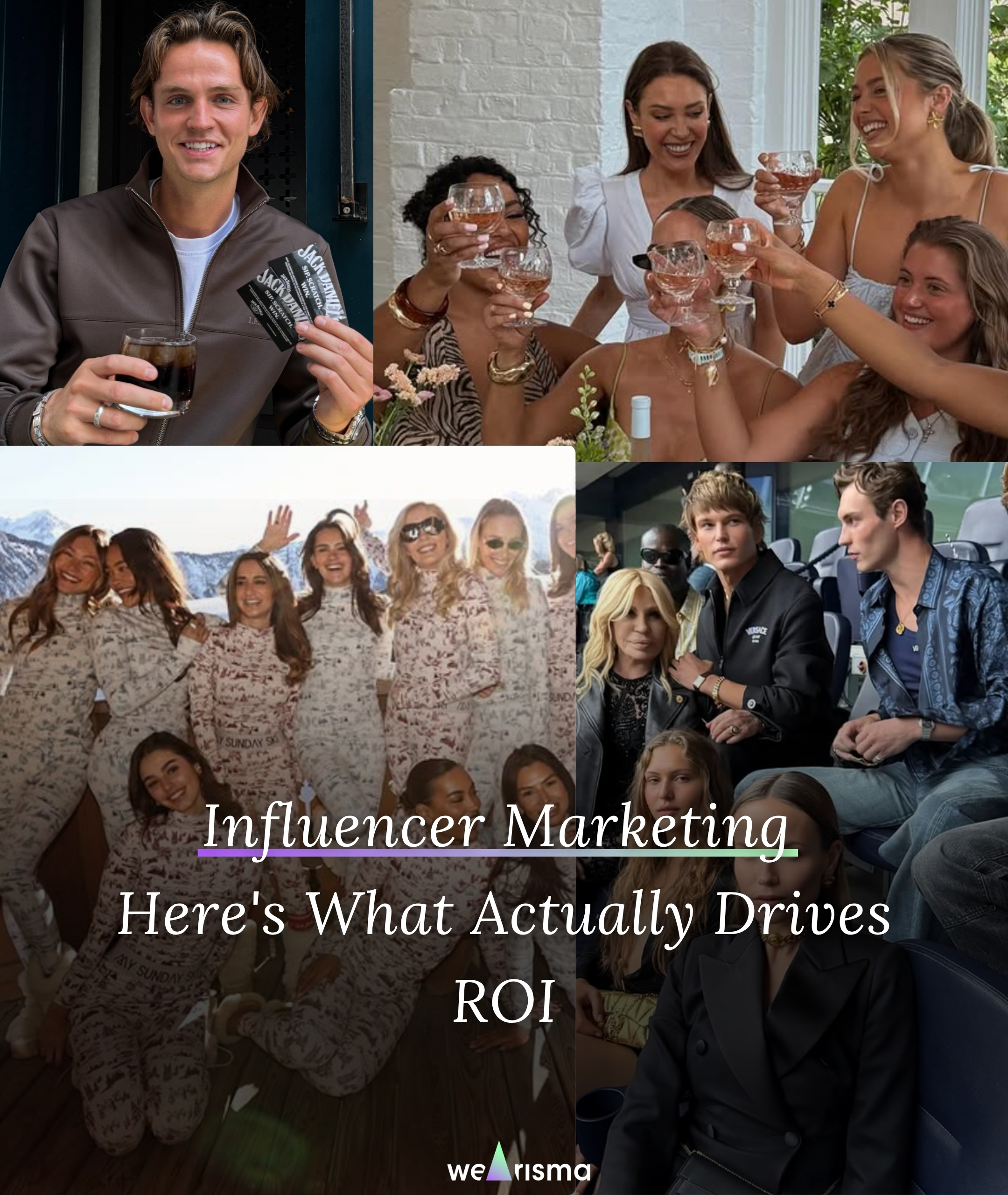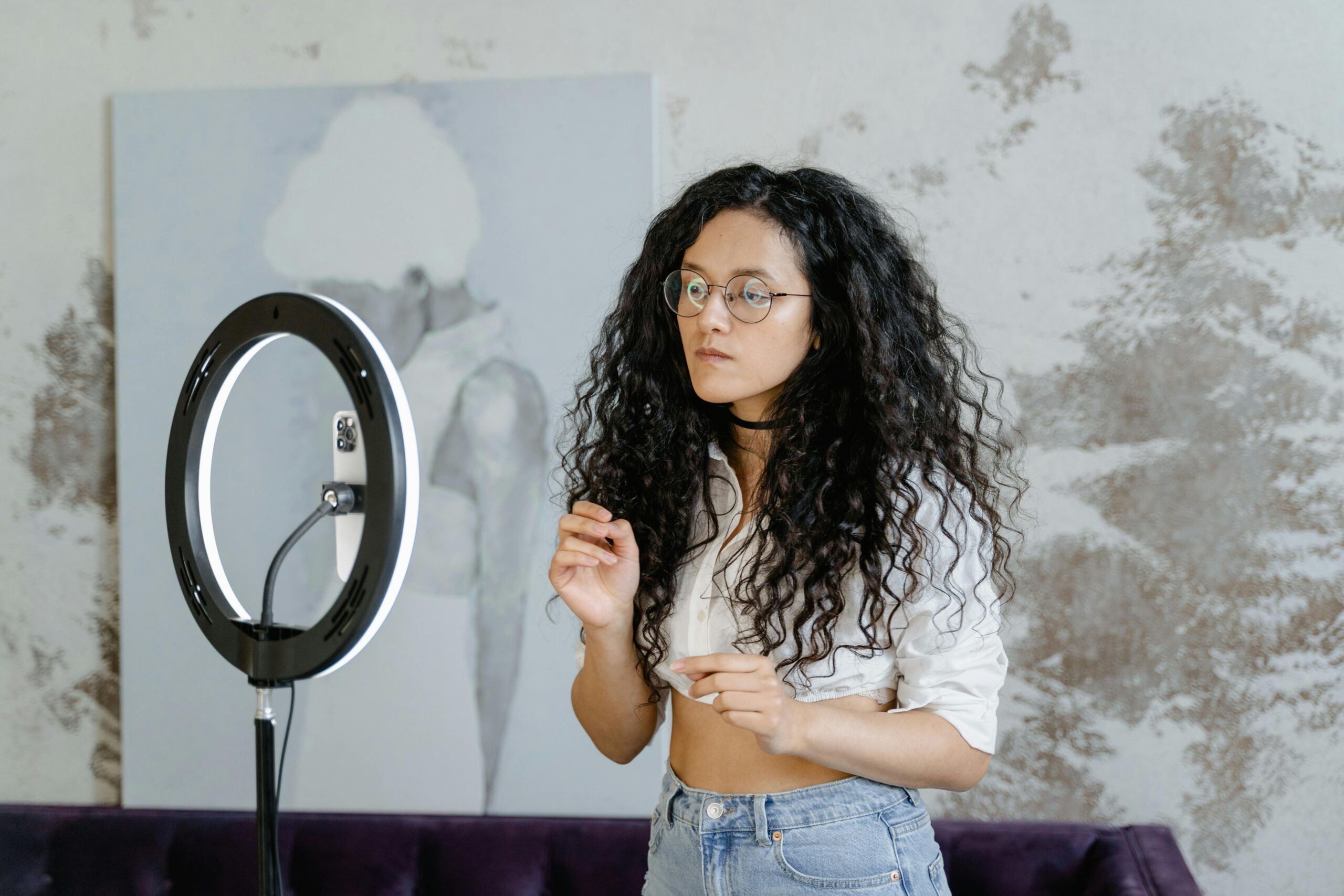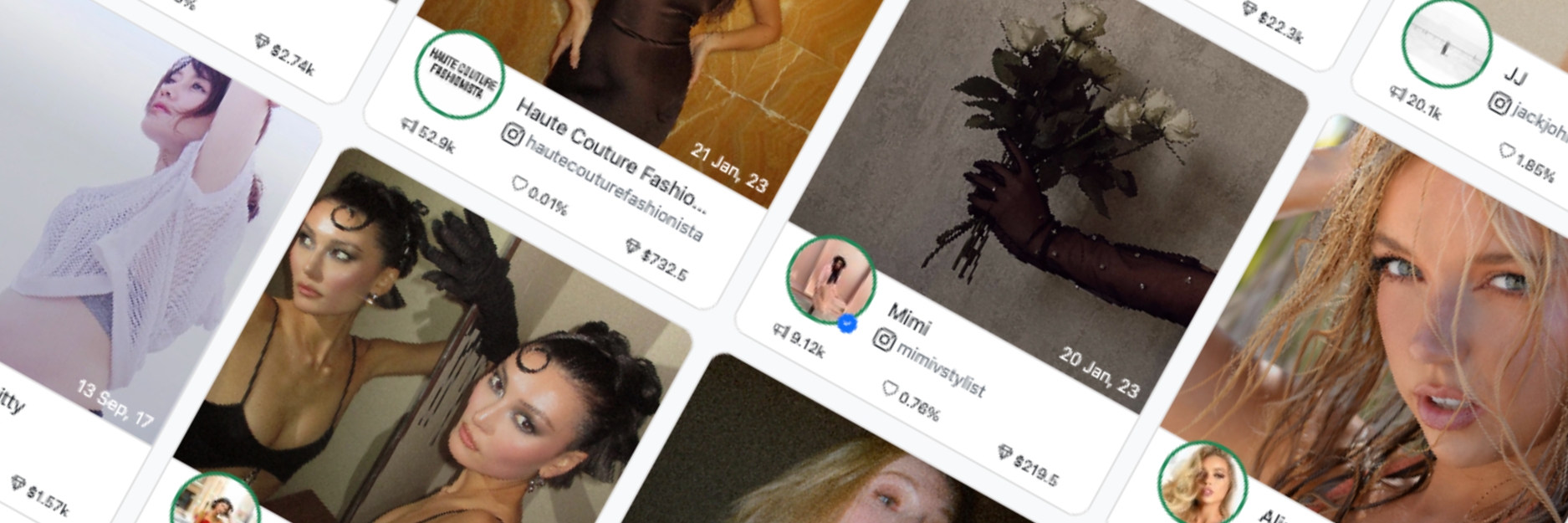🎉 WeArisma joins forces with NielsenIQ (NIQ) to, for the first time ever, measure the impact of Creator Marketing on sales.
How your brand can drive real ROI by approaching your influencer marketing strategy with planning, insight, and purpose.

Published On: October 16, 2025
Influencer marketing is an increasingly popular marketing medium across sectors, but is it really just expensive social media advertising?
It’s a question so many marketing teams are asking right now, especially as budgets tighten and expectations rise.
A recent Reddit thread on this hot topic sparked the debate: are brands paying too much for too little return?
In our opinion, partnering with creators can be one of the most efficient, high-ROI channels – if you get it right.
The difference between wasted spend and measurable success lies in strategy, audience alignment, and working with the right tools to uncover opportunities while measuring impact.
At first glance, influencer campaigns can look expensive. But those price tags don’t appear out of nowhere.
Consumers frequently make purchases after seeing relevant influencer posts. This trend alone demonstrates the potential value of a well-crafted influencer marketing strategy.
Several factors drive the cost, and understanding them can help your brand see where the real value lies. Let’s explore.
Many brands still pay premiums for large-scale audiences. But a million followers doesn’t translate to return on investment (ROI) if an audience isn’t actively engaged. The bottom line? A smaller, highly engaged community often delivers stronger conversions – and lower cost per result.
An influencer may have strong reach, but if their audience doesn’t match your target demographic, your message will likely miss the mark, generating minimal engagement in the process. Paying for exposure to the wrong audience is one of the biggest hidden costs in influencer marketing.
Sharp, striking visuals, immersive storytelling, and multi-platform content can add to your influencer marketing costs. But when these creative assets are planned strategically and align with your audience’s aspirations, you can repurpose them across channels for maximum impact.
Without reliable tracking (think UTM parameters, discount codes, or affiliate links) it’s impossible to demonstrate the true impact influencers actually had. Measurement is what separates investment from guesswork.
Another key piece to the measurement and attribution puzzle is visibility. Typically, traditional influencer marketing tools capture only 10% of brand conversations.
To uncover the treasure trove of untagged organic content and mentions hiding beneath the surface, working with the right tools is essential.
Influencer marketing can outperform traditional advertising when brands approach it with consistency and precision. Here’s an overview of key strategic elements why they typically drives measurable ROI:
Smaller creators often have more loyal, engaged audiences. They cost less per post but deliver higher authenticity and conversion rates.
Genuine content builds trust. When creators believe in the brand, their followers will respond far more strongly.
Understanding how influencer content contributes at each stage – awareness, engagement, and conversion – gives a clearer picture of total impact.
Ongoing collaborations deliver consistency, deeper storytelling, and the ability to repurpose content over time, which brings us onto our next point.
Using influencer assets in paid ads, social content, or email marketing extends their value far beyond the original campaign.
Read: Traditional vs. AI Creator Marketing Measurement: Which Is Best For Your Brand?

Even well-intentioned influencer campaigns can fall flat on their virtual face, but what’s the issue, exactly? Here’s where brands often go wrong:
Based on insights from the Reddit community and our data-driven approach, here’s how brands can turn influencer marketing into a powerful ROI channel.
Gaining the inspiration you need to drive consistent results from your influencer marketing campaigns with these three real-world examples:
1. Niche influencer pilot: A skincare brand worked with several mid-tier creators (20 to 30 thousand followers each). The result? Higher conversion rates and lower cost per acquisition than macro influencers, thanks to deeper engagement.
2. Repurposed content strategy: A fashion retailer reused influencer visuals in paid ads and email campaigns. The validated content outperformed all standard creative – cutting the brand’s overall cost per lead significantly.
3. Measurement evolution: A wellness company tied influencer campaigns to brand search growth and retention data. While direct conversions were moderate, the long-term brand lift it earned justified continued influencer investment.
| Factor | Traditional advertising | Influencer marketing |
| Reach or scale | Broad, often untargeted reach. | More focused, niche audiences. |
| Trust and authenticity | Often perceived as corporate. | Feels personal and trustworthy. |
| Cost profile | High fixed costs. | Flexible and scalable. |
| Measurement | Standardized, impression-based. | Complex but increasingly measurable with the right tools. |
Read: Paid vs Organic Influencer Marketing Strategy: Which is Best for Your Brand?
No, not when it’s approached with thought and diligence.
Influencer marketing only becomes “overpriced advertising” when brands keep chasing vanity metrics, skip true measurement frameworks, or fail to forge creator partnerships based on shared values.
Plus, official IPA data shows that influencer marketing delivers the highest overall long term ROI of any key advertising channel.
When executed strategically – with engaged communities, clear attribution, and strong creative repurposing processes – influencer marketing doesn’t just compete with traditional advertising. No, it actually serves to complement and enhance it.
In summary, you should:
Influencer marketing isn’t overpriced, ineffective or thoughtless influencer marketing is what will sap your budget. With a cohesive strategy and intelligent measurement tools at your disposal, your brand can turn creator collaborations into one of your most cost-effective growth channels.
WeArisma empowers brands to unlock measurable ROI from influencer activity. We can help you identify the right creators, tracking full-funnel impact, and transforming influencer content into long-term brand assets.
Book a demo to discover what our platform can do for you and your creator marketing strategy.
Access timely cultural trends, strategic creator guidance, and industry best practices.
Discover the most groundbreaking entertainment marketing insights from our eye-opening panel discussion at ‘The State of Influence 2025 and future-proof your brand for tomorrow’s creator economy.
Fashion and Sport Brands Global Analysis.
Wimbledon’s evolution into a cultural engine allows brands to move beyond visibility, fostering deeper resonance through tradition, lifestyle, and aspirational storytelling.
In an experience-driven economy, where influence is shaped by shared moments and storytelling, Wimbledon provides a rare opportunity to reach global audiences in a context that extends well beyond sport.


Join our community and get cultural insights, creator strategy guides, and real-world best practices.